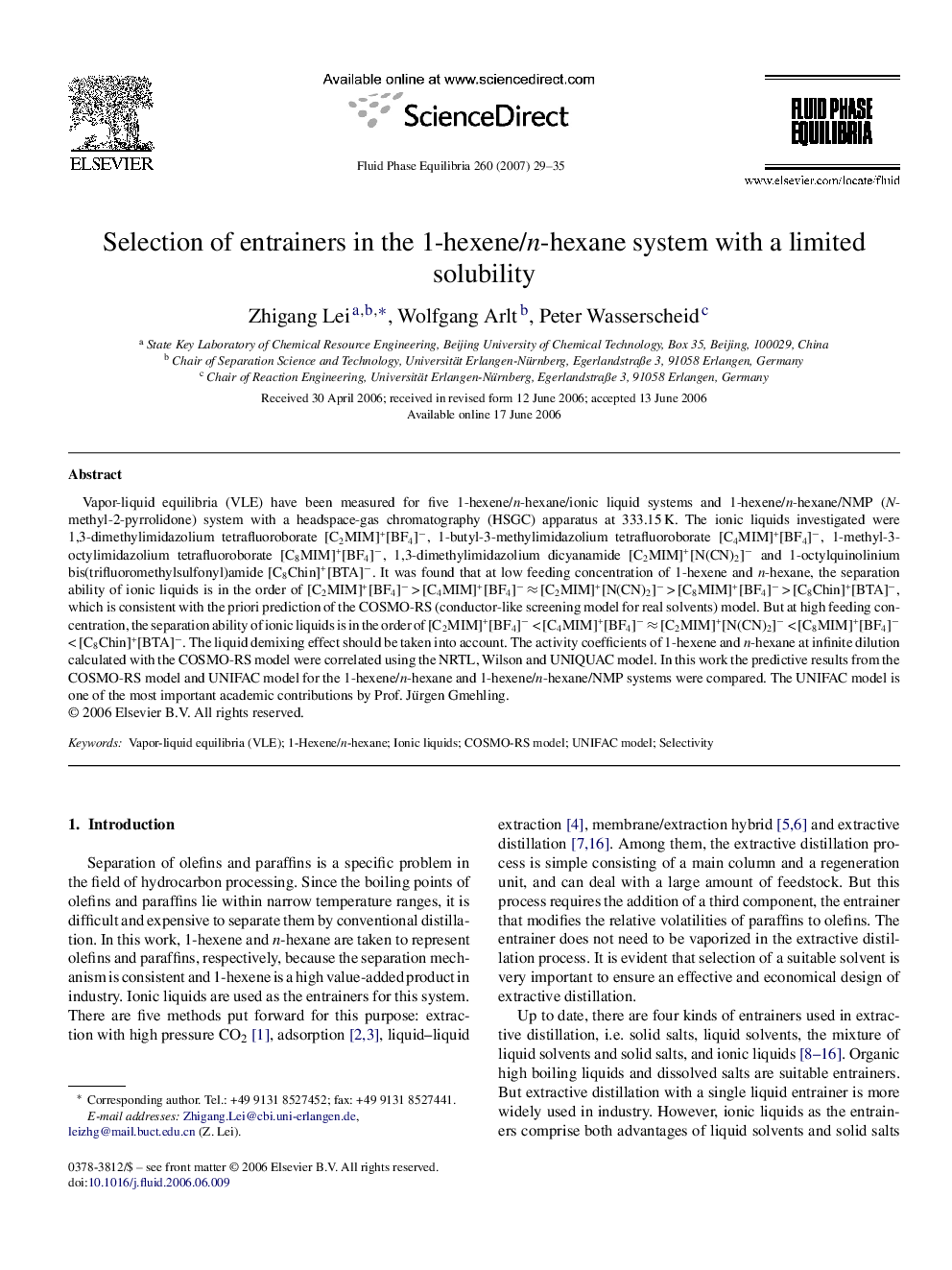| Article ID | Journal | Published Year | Pages | File Type |
|---|---|---|---|---|
| 204721 | Fluid Phase Equilibria | 2007 | 7 Pages |
Vapor-liquid equilibria (VLE) have been measured for five 1-hexene/n-hexane/ionic liquid systems and 1-hexene/n-hexane/NMP (N-methyl-2-pyrrolidone) system with a headspace-gas chromatography (HSGC) apparatus at 333.15 K. The ionic liquids investigated were 1,3-dimethylimidazolium tetrafluoroborate [C2MIM]+[BF4]−, 1-butyl-3-methylimidazolium tetrafluoroborate [C4MIM]+[BF4]−, 1-methyl-3-octylimidazolium tetrafluoroborate [C8MIM]+[BF4]−, 1,3-dimethylimidazolium dicyanamide [C2MIM]+[N(CN)2]− and 1-octylquinolinium bis(trifluoromethylsulfonyl)amide [C8Chin]+[BTA]−. It was found that at low feeding concentration of 1-hexene and n-hexane, the separation ability of ionic liquids is in the order of [C2MIM]+[BF4]− > [C4MIM]+[BF4]− ≈ [C2MIM]+[N(CN)2]− > [C8MIM]+[BF4]− > [C8Chin]+[BTA]−, which is consistent with the priori prediction of the COSMO-RS (conductor-like screening model for real solvents) model. But at high feeding concentration, the separation ability of ionic liquids is in the order of [C2MIM]+[BF4]− < [C4MIM]+[BF4]− ≈ [C2MIM]+[N(CN)2]− < [C8MIM]+[BF4]− < [C8Chin]+[BTA]−. The liquid demixing effect should be taken into account. The activity coefficients of 1-hexene and n-hexane at infinite dilution calculated with the COSMO-RS model were correlated using the NRTL, Wilson and UNIQUAC model. In this work the predictive results from the COSMO-RS model and UNIFAC model for the 1-hexene/n-hexane and 1-hexene/n-hexane/NMP systems were compared. The UNIFAC model is one of the most important academic contributions by Prof. Jürgen Gmehling.
